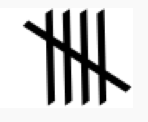You will see that this is an abstract class, because the method int getNewSize() is missing. This is intentional, because we want to experiment with various ways of replacing the full array, an we do that by specifying the array's new size.We provide two extensions of Rarrays for you: Quadruple and TimesTen, which cause the new array to be 4 and 10 times the previous size, respectively. Each of those classes completes the Rarrays abstract class by providing the missing method int getNewSize().
Take a look.
protected int[] array;that you find in the Rarrays class. You can assign that instance variable to any integer array.
For example, the reset(Ticker) method assigns it thus:this.array = new int[2];
public void reset(Ticker ticker) {
this.ticker = ticker;
this.array = new int[2];
ticker.tick(2);
}
- We save ticker in an instance variable this.ticker so we can use it throughout this class and any of its extensions. In particular, we use it in replaceArrayWithBiggerOne().
- We start our array with two elements.
- We use the
ticker to account for operations that matter in our program.
If you write ticker.tick(), the ticker advances by one tick.
If you write ticker.tick(n), the ticker advances by n ticks.
In the code above, why do we write ticker.tick(2)?
- This is a very important point, and its understanding is a major goal of this studio.
- Why does new int[2] take two operations in our thinking?
- The statement new int[2] takes just one line of Java code. But what does Java do in response to that line?
- Java must allocate two elements for the array. Perhaps that takes just as single operation.
- But Java must also initialize those elements to 0.
- That cannot take a single operation and so its cost depends on the size of the array.
- Thus, for instantiating an array of two elements, we must tick twice.
- Generally, instantiating an array of n elements requires n ticks.
- One person announces a positive integer n. There is no limit on how large n can be. For example, I might announce the integer five. You should pick a larger integer, in the thousands.
- Divide the rest of the group into two teams: the decimal team and the tally mark team.
- The decimal team writes down the announced number in decimal form. For my announced five, they would write 5.
- The tally mark team writes down the announced number in
tally mark form.
The tally mark form for five is
 .
.
- Which group do you expect to finish first?
- Can you formalize, in terms of n the amount of work (ticks) that each group must do to write n in the form required for that group?
For example, if for some reason that two elements are insufficent for the array, the following would allow the instance variable to reference an 8-element array:However, reassignment of the array loses the reference to the previous array. Any data in that previous array would be lost.this.array = new int[8];
To preserve information as you provision for a larger array, you must hold on to both arrays, copy the old information into the newer one, and then reassign the instance variable.
Your first task is to complete this method until it passes the testGrowPreservesData test within the TestRarrays unit test.
The TestRarrays contains 3 test cases:
- testInit should work as given to you.
- testGrowPreservesData is the one you are working toward now. When it's working you will see a green check box just as you see for testInit in the picture above.
- testGrowSufficientTicks is one you work on next. For now, don't worry about this one.
Work together to write the appropriate code below the comments, but don't worry about the ticks just yet. Ask for help from others or from a TA as needed.
Work on this until you get the green bar, indicating all tests are passing.
We are not yet interested in the output of those runs, but make sure they run without error.